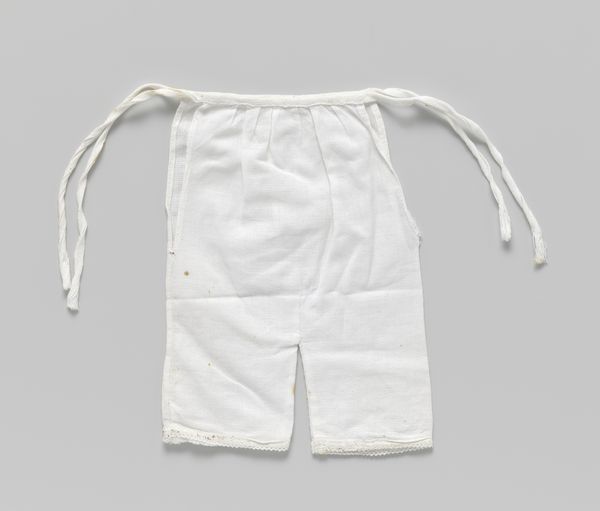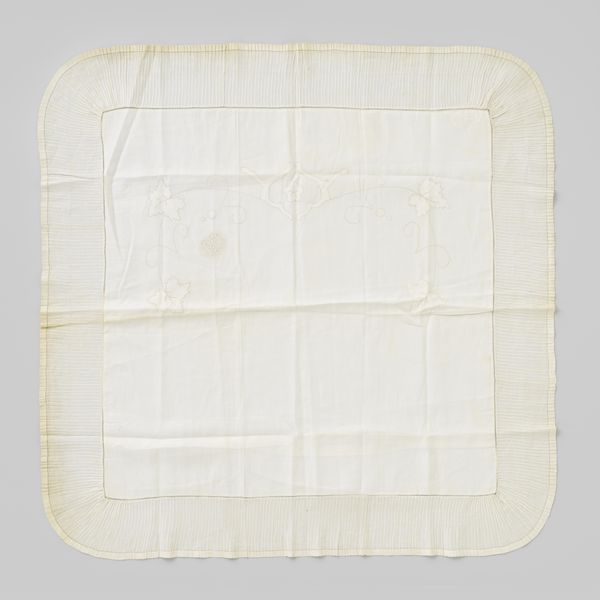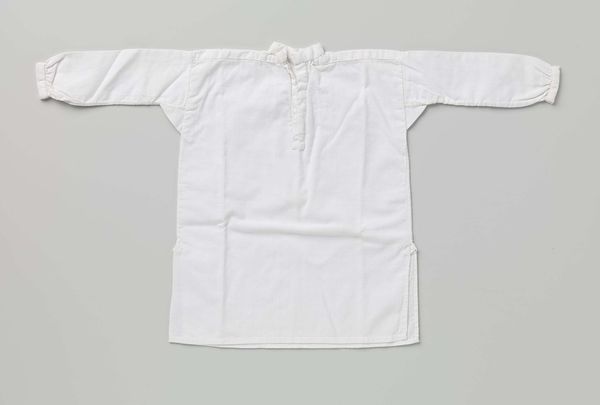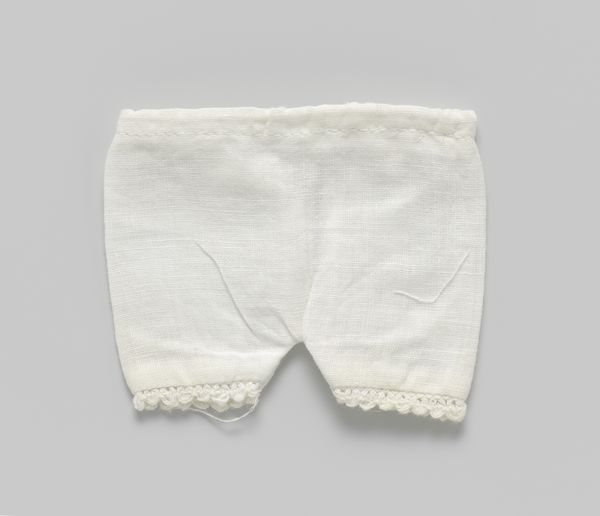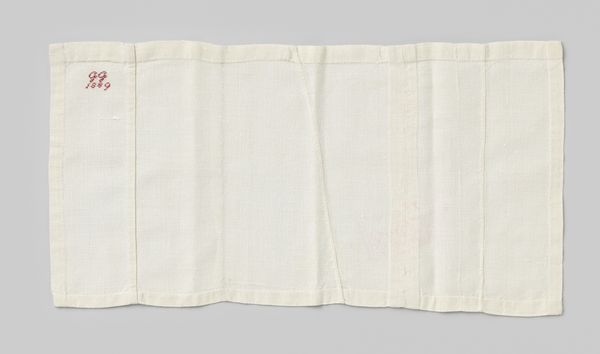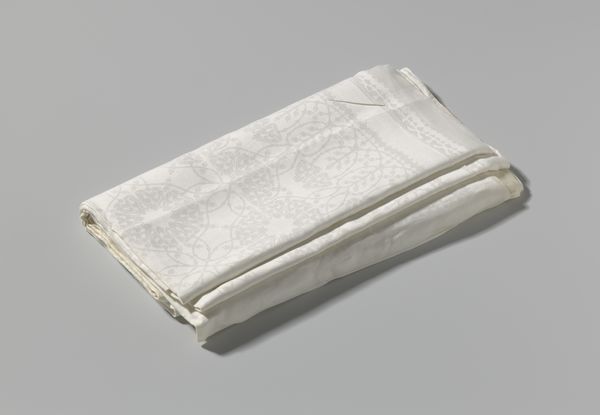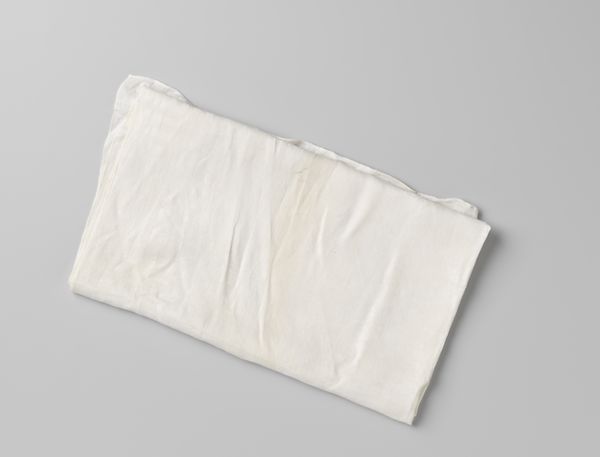
textile, cotton
#
textile
#
cotton
#
imprinted textile
Dimensions: length 20.5 cm, width 27.5 cm
Copyright: Rijks Museum: Open Domain
This pillowcase was made of white cotton by G. Glas. While simple, this seemingly mundane object can tell us a lot about the social conditions of its time. Consider the labor involved in producing this pillowcase, from cultivating cotton to weaving the fabric and sewing the final product. Was it factory-made or hand-sewn? Was it produced in the Netherlands where the artist was from, or was it imported from a country with cheaper labor? Such details help to illuminate the economic structures and trade networks that shaped the everyday lives of people. The presence of buttonholes suggests attention to detail and a certain level of care in its making. Understanding the social and institutional context of this artwork requires delving into archives, historical records, and economic data. By exploring these resources, we can gain insight into the cultural values, and social conditions that shaped its creation.
Comments
No comments
Be the first to comment and join the conversation on the ultimate creative platform.

